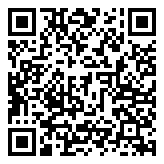JoomConnect Blog
Why You Should Identify Your Ideal Client (and How to Do So)
While it might be nice to think that your business can serve “anyone”—after all, being able to serve anyone means that you have the potential to work with everyone—this, unfortunately, isn’t the reality. Even the most accessible businesses will have certain clients that are inherently more valuable than others. These “ideal clients” are critical to identify, so let’s talk about how you can do so.
Before we do that, however, let’s examine why it is so important to know who makes up your ideal customers or clients.
Why Should Small and Medium-Sized Businesses Know Who Their Ideal Clients Are?
At The End of the Day, a Client is a Client is a Client… Right?
Yes… and no.
It’s true that money is money and that doing business with anyone could be seen as a plus for an organization. However, that statement omits the considerable amount of value that can be seen by dividing your clientele into different groups—different people with specific shared needs and behaviors—and identifying which niche benefits the most by working with your business.
This niche exemplifies your ideal client.
This is the niche your marketing should really be speaking to. This niche should have problems you can solve, can (and will) purchase (and use) your products and services, and support the values that your brand exemplifies and represents. Your ideal client is excited to work with you because of your brand and the services you provide.
Your ideal client is the client you’re really excited to get because (short of you fumbling the ball) they’ll be around forever.
How to Identify Your Ideal Clients
Clearly, this is the kind of client you want to have more of, so let’s get into how you can figure out who they are.
To do so, you can undertake a somewhat straightforward set of tasks, combining their results to get a pretty concrete idea of whom your marketing should be primarily targeting.
Determine What Your Services Help Solve
Regardless of your industry, your operations either solve a problem or fulfill a need for your audience. Identifying those problems or needs will be crucial because it will help narrow your audience to those who frequently experience them and inform your messaging as you communicate with them.
Ascertain Who You Currently Serve Who Fits the Bill
It’s important that you don’t overlook your current customers and clients as you try to determine what your ideal client looks like. Take a look at who you’re serving now—what do their business demographics look like?
Turn to your customer relationship management tools to see what industry they operate in, what they tend to buy and when they do so, and what their challenges are. Which customers or clients are your favorites (admit it, we all have them), and what demographics of theirs tend to line up? This data can help you laser in on who you should be targeting.
Check Your Google and Social Media Analytics
These platforms offer the businesses that utilize them extensive marketing tools, including some very in-depth data analytics that can help you identify who is most interested in your business offerings. Google Analytics can give you details about how your online visitors interact with your website and their behaviors while they are there, and using the tools social media platforms provide can show you what content is working with your audience.
This Information Helps You Craft Customer Personas to Target
With the data that these activities help you gather, you can design customer personas that help you identify the different types of clientele you have—ideal and otherwise. This will help you more effectively target the types of clients and customers you are most interested in working with through your marketing.
If you’re a managed service provider, we can help you. Give us a call at 888-546-4384 to learn more about our marketing services.



